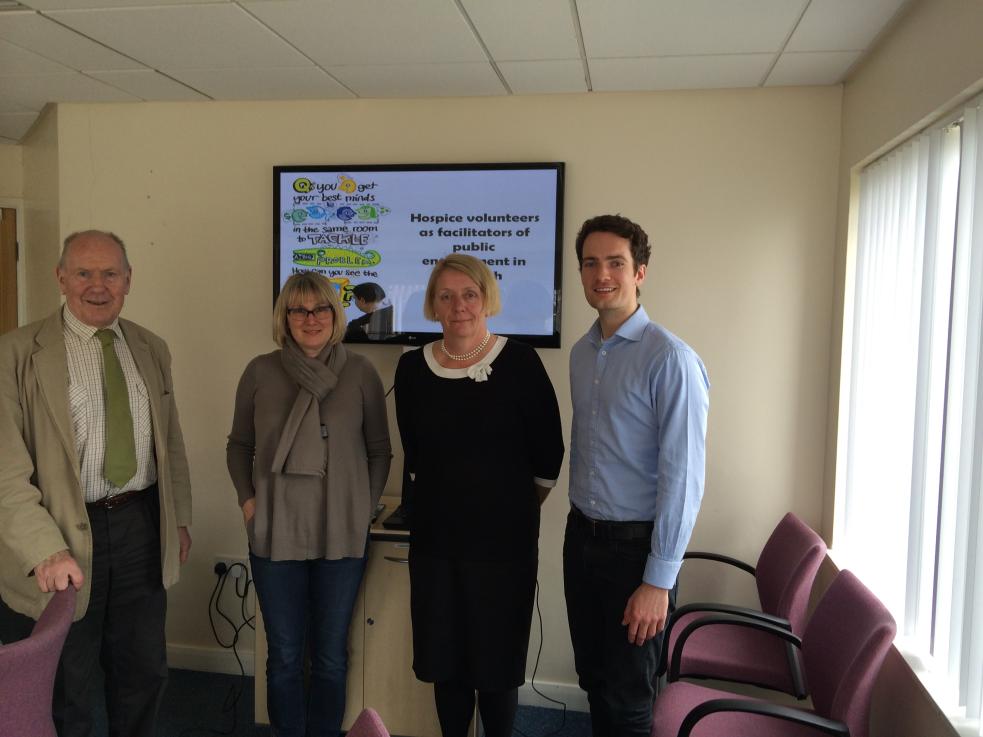Hospice volunteers
Patient public involvement/public engagement (PPI/PE) in palliative and end of life care can be particularly challenging to achieve.

University of Leeds
Patient public involvement/public engagement (PPI/PE) in palliative and end of life care can be particularly challenging to achieve. In palliative/end of life care, the content and focus of research often include topics that are highly emotive, with strategies for engaging the public in dialogue around this area not yet established. This project developed and applied an approach to engaging members of the public in such a way that topics of an emotive nature could be explored in a respectful and meaningful way. We established a novel PE-approach of using volunteers working in hospice shops to facilitate knowledge exchange between members of the public and research teams. We recruited nine St Gemma’s Hospice shops across Leeds; representatives from each attended an information workshop to discuss the value of capturing public views on research prioritisation to meet local community needs for palliative care. Expectations were transparent and we ensured volunteers were comfortable supporting members of the public visiting the shops to complete the survey. Quieter spaces in shops were identified to complete the survey and provide privacy should personal topics stir emotions. A dissemination event was held for volunteers and representatives from national public involvement groups, where preliminary findings, volunteers’ experiences and ways to improve this public engagement approach were discussed.
Our project sought to extend the role of volunteers and explore their experience of supporting public engagement to obtain a wider viewpoint for research priorities for palliative care research in their local community. Participating volunteers reported a positive experience, but areas were identified for improvement in similar future work, for example, adapting content to the demographic of shop visitors and ensuring formal infrastructure to support mediation around confidential information management and discussion of sensitive topics. Volunteers reported that most shop visitors approached by the survey were receptive to its content. One respondent took home a copy of the survey and returned it with a 4-page detailed description of her experience of palliative care during her husband’s illness, reporting that the survey alleviated some remaining anger that she felt about her own experience. For the research team, such responses, alongside detailed responses from other respondents provided invaluable insight to inform future public engagement but highlighted the valuable insight and support that can be provided by volunteers working with the hospice.

